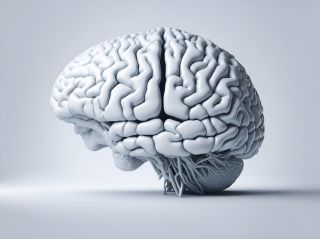Artificial Intelligence
Wireless Technology Can Help Paralyzed People Walk Naturally
A digital bridge between the brain and spinal cord helps a quadriplegic to walk.
Posted June 27, 2023 Reviewed by Abigail Fagan

Artificial intelligence (AI) machine learning is accelerating advancements in brain-computer interfaces (BCIs) and brain-spine interfaces (BSIs) to help paralyzed people move again. A new peer-reviewed study shows how AI helped to restore communication between the brain and spinal cord to enable a quadriplegic (tetraplegia) person to stand and have natural control of walking.
“We report the first proof-of-concept of brain-controlled spinal cord stimulation in human,” the researchers affiliated with Swiss, French, UK and US institutions wrote.
The breakthrough study was conducted by researchers affiliated with Swiss, French, UK, and US institutions. Scientists who worked on the study from Switzerland include those with affiliations with Geneva-based Ecole Polytechnique Fédérale de Lausanne (EPFL), and Lausanne-based scientists at Lausanne University Hospital (CHUV), University of Lausanne (UNIL), NeuroRestore, Defitech Center for Interventional Neurotherapies, EPFL/CHUV/UNIL, and ONWARD Medical. Outside of Switzerland, the scientists who worked on the study include those affiliated with the Université Grenoble Alpes in Grenoble, France, US-based Medtronic in Minneapolis, Minnesota, the University of Oxford in England, and Netherlands-based Sint Maartenskliniek in Nijmegen.
“This brain–spine interface (BSI) consists of fully implanted recording and stimulation systems that establish a direct link between cortical signals and the analogue modulation of epidural electrical stimulation targeting the spinal cord regions involved in the production of walking,” the scientists wrote.
The AI-enabled system was tested on a paralyzed 40-year-old male who suffered from a cervical spinal cord injury (SCI) from a cycling accident over a decade prior to the study.
“The participant reports that the BSI enables natural control over the movements of his legs to stand, walk, climb stairs and even traverse complex terrains,” the researchers wrote.
Two wireless ElectroCorticoGram (ECoG) recording implants called WIMAGINE (Wireless Implantable Multi-channel Acquisition system for Generic Interface with NEurons) were surgically placed on the outermost membrane layer that surrounds the brain called the dura mater in the sensorimotor cortex area of the brain of a quadriplegic individual under general anesthesia. These devices were placed over the brain region responsible for leg movement. These patent-pending devices are equipped with electrodes designed for recording human brain activity over a long period of time.
“The participant regained the ability to walk with crutches overground even when the BSI was switched off,” the researchers wrote. “This digital bridge establishes a framework to restore natural control of movement after paralysis.”
To deliver electrical stimulation to the spinal cord, the team implanted a Medtronic ACTIVA RC implantable pulse generator linked to a Medtronic Specify Surescan 5-6-5 paddle lead over the area of the spinal cord that controls leg movement.
The wireless devices recorded brain activity via the 64 electrodes per implant and streamed the data to an external wearable processing unit.
“We conceived a wireless, digital bridge between the brain and spinal cord that restored natural control over lower limb movements to stand and walk on complex terrains after paralysis due to a spinal cord injury,” the scientists wrote. “Moreover, neurorehabilitation mediated neurological improvements that persisted even when the bridge was switched off.”
AI machine learning is used to decode brain activity in real time in order to predict the intended activity. These AI-predicted intentions are converted into electrical stimulation of the spinal cord to activate the muscles in the leg needed to perform the desired action.
“The concept of a digital bridge between the brain and spinal cord augurs a new era in the treatment of motor deficits due to neurological disorders,” the scientists reported.
Copyright © 2023 Cami Rosso All rights reserved.


